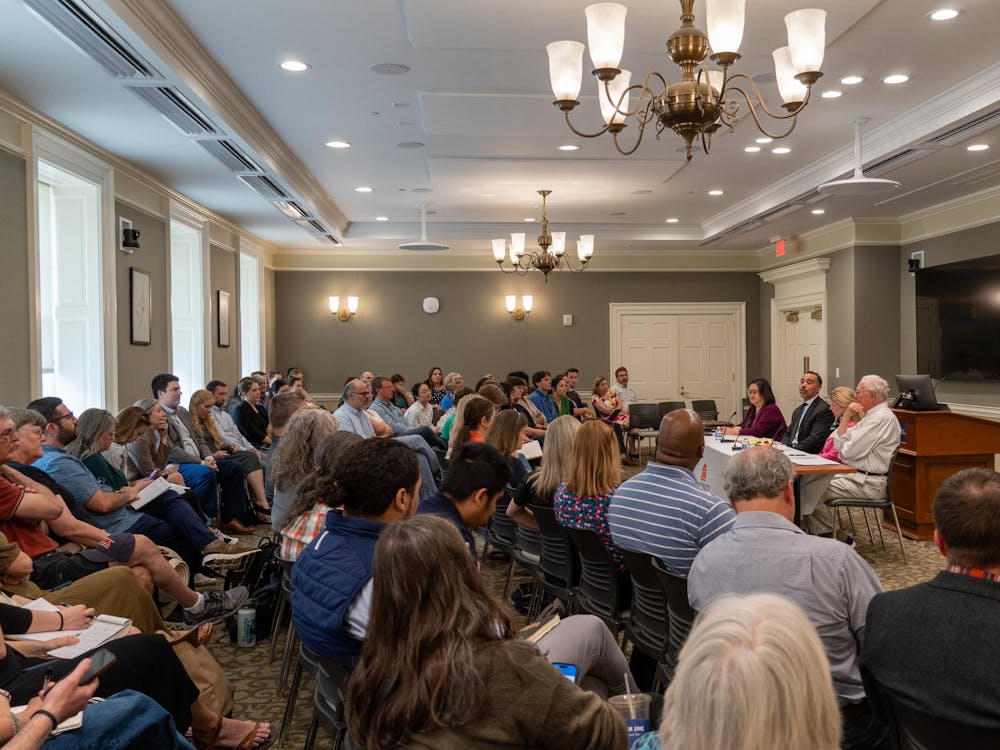The General Faculty Council, which represents full- and part-time general faculty and the senior professional research staff, held its first meeting of the semester yesterday afternoon, discussing the progress of restructuring currently taking place in the University Human Resources office.
Chief Human Resources Officer Susan Carkeek presented information about the differences between the current and the new human resources structure, the latter of which will go into effect Oct. 1. She identified five key policy areas that will change under the new system for employees who choose to opt into it: career advancement, performance evaluation, leave, compensation and employment-related policies.
In an attempt to improve career advancement, employees will now develop career action plans, Carkeek said, defining their goals and what opportunities would help them grow in their professional interests. Human Resources identified 75 different career paths throughout the University, according to Carkeek, to serve as starting points and examples for supervisors and employees to plan specific career paths.
The new system to evaluate employees’ performance will also be more uniform, Carkeek said, and will include a means of showing employees the University’s goals, their specific department’s or school’s goals, and their personal goals. This system enables employees to see how their personal career goals are linked to the goals of the University as a whole, thereby making University departments and employees more connected.
Carkeek also noted that the evaluation system currently operates formally, assessing the specific tasks the employee accomplishes, rather than how those tasks are accomplished. The new system, however, will evaluate what you do “in the context of other institutional values,” such as teamwork and displaying good judgment.
Human Resources has also drawn up a draft of a new leave plan and will be asking employees for feedback over the next two weeks. Carkeek noted, though, that no changes to the leave plan will be made until 2010.
Some possible changes include the ability to “sell back” annual leave that employees do not use, as well as a new Web-based attendance system, Carkeek explained.
Another topic Carkeek discussed is increased transparency related to employee salaries and compensation.
“Every position will have a market range,” Carkeek said, that will be used “to help manage salary increases.”
The market ranges for each position will be released to the public, so employees can see if their salary matches the market range for their particular positions.
Several faculty members expressed concern about what to do if members of their staff are displeased with receiving below-market compensation. Carkeek said she expects the new policy to generate anxiety, but noted that by making salary information public, sorting through any problems should become easier.
“I’d rather err on the side of making it public and working our way through it,” she said.
Concerns were also expressed about the possibility of the new benefits not being as effective in a few years because of the current state of the economy. Carkeek assured those present that it is not in the best interest of the University to “pull the rug out” from beneath its employees by decreasing benefits. She also noted that she does not expect a significant number of employees to accept the new plan right away.
“People will want to see how it plays out,” she said. “A lot of policies won’t look obvious, [and it may] take some time to see the advantages.”
Following the meeting, Senior International Advisor Richard Tanson said he thinks the restructuring is very progressive.
“This set of propositions ... is one of the most innovative things the University has done,” Tanson said, especially “in a climate where employees have not always felt as valued as they ought to be.”
CME Program Manager Pam Macintyre said she thinks the new system will be an excellent opportunity, but said it would be more appropriate for younger employees.
“If you’re already invested in one system, you might not move over,” she said. “For someone like myself, about five years from retirement, it doesn’t make much sense [to switch].”
For the time being, Carkeek said, employees will not be required to switch to the new plan.
“If 10 percent of you switch, I will be very surprised,” she said; however, she noted that she hopes more employees will choose the new plan in the future.
Though the first enrollment period will begin Oct. 1, Carkeek said there will be another enrollment period in 2009, giving employees a chance to see the system in effect before deciding to make the switch.






